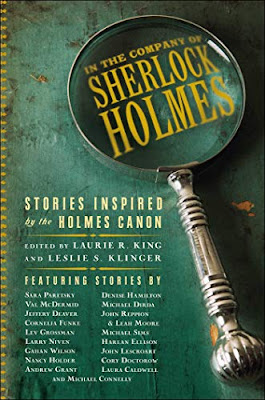Where to begin? First off, The Reading List by Sara Nisha Adams is not at all what I expected it would be. I was expecting more of a novel showing how each of the eight novels on “the reading list” had something specific to teach us about being human beings living lives we too often take for granted…with emphasis on the themes and characters of each book. Adams does, I think, convincingly make that point, but she accomplishes it by taking a rather barebones approach to the eight books on the list themselves.
But the more I think about it, the more I believe that Adams perfectly tailored The Reading List to her chosen target audience: those of us who self-identify as readers. Adams likely assumed that most of her readers would already be familiar with the eight novels on the list and the one other one that plays a large role in this, her debut novel. (I’ve read seven of the nine books, and I suspect that might be about just about the average for people drawn to The Reading List.) For those wondering, the list consists of To Kill a Mockingbird, Rebecca, The Kite Runner, Life of Pi, Pride and Prejudice, Little Women, Beloved, and A Suitable Boy. The Time Traveler’s Wife is not actually part of the list, but it will turn out to be the most significant book in Adams’s story.
The Reading List is rather cleverly constructed. It is divided into nine sections, each carrying the title of one of the nine books I’ve mentioned. Within each of these sections there are several short chapters titled with the name, or names, of the book’s two main characters, Aleisha (a teenager whose life centers entirely on taking care of her invalid mother) or Mukesh (an elderly Hindu man who has been a widower for one year). Intermeshed with all of this are brief flashbacks to 2017 (the book is set in 2019) that feature a handful of side characters that play key roles in the story.
At first, I found it all a bit confusing, and then when I figured out where we were heading, I began to have second thoughts about reading this one at all. It all seemed too cute and make-believe, a fairy tale of sorts just for avid readers. And it was obvious that Sara Nisha Adams is a talented writer who knows where all the “buttons” are — and that she planned on pushing each and every one of them before she was done. Not going to work on me, I thought, so why read on? Well, let’s just say that I was wrong; even though I knew exactly what Adams was up to by pushing all those buttons, I could not resist reading the next page, then the next chapter…and then I was well and thoroughly hooked. The Reading List is, as it happens, a character-driven novel after all, and I found myself caring about Aleisha and Mukesh and could not wait to find out how things would turn out for them and those closest to them.
As The Reading List opens, Mukesh is a timid little man who seldom ventures outside his home anymore. His three adult daughters worry about him, but they really don’t have the time to make sure that he is doing well after the loss of their mother. Mukesh wants nothing more than to find a way of bonding with his little bookworm of a granddaughter, and he finally gets brave enough to venture into the local library in search of a book they can share. There he meets Aleisha, a rather cranky library summer-worker, who practically runs him out of the building. Aleisha, though, has recently found a book list inside a copy of To Kill a Mockingbird that she was shelving, and after her boss coerces her into making amends with Mukesh, she decides to recommend those eight books to the old man — one by one.
But the only way Aleisha can discuss the books with Mukesh is to read each of them before she gives him the next book on the list. And what happens next is the sometimes tragic fairy tale at the heart of The Reading List.
Bottom Line: The Book List is a novel aimed at dedicated readers, and Sara Nisha Adams, herself an obvious reader, strikes the perfect tone here. As sad as the novel is at times, it manages to be just the kind of feel-good story that we need every so often. Even the little side incidents used to develop the characters strike the right tone.One of my favorite passages from the novel describes the day that Mukesh takes his granddaughter Priya to the flagship Foyles bookstore in London:
“Wow!” Priya gasped quietly. She quickly shook off her awe, trying to play it cool. Mukesh felt the same. He’d seen books now, but the library was sparse compared to this. Shelves and shelves. Floors and floors. Tables and tables. Piles and piles of books. It was as if they were floating all around him, lifted up by some kind of magic, offering new worlds, new experiences. It was beautiful.
And then Mukesh brings his granddaughter to the till where he tries to impress her by asking for copies of Rebecca, The Kite Runner, and To Kill a Hummingbird. Now there’s a scene I’ll remember for a while.
 |
| Sara Nisha Adams |































